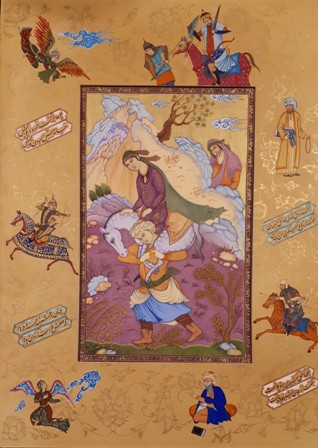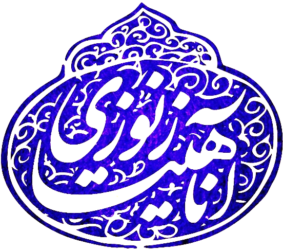Tabriz School
As the Safavid order actively pursued the creation of a unified nation-state in Iran by bringing together disparate and formerly feuding elements, so, too, Safavid art emerged out of several previously distinct strands. Most important were those roughly corresponding to the historical division of Iran between its eastern and western halves; in the later 9th/15th century these were controlled respectively by the Timurid’s from He rat and the Turk-mans from Tabrīz. Whether in architecture, calligraphy, or the figuration arts, it was the blending and synthesizing of these two cultural traditions that was essential to the creation of Safavid art. By the middle of the 10th/16th century the arts of Safavid Iran had already begun to exert considerable impact upon its neighbors. To Mongol and Deccan i India the appeal of Safavid architecture, textiles, calligraphy, and painting was enormous, and large numbers of skilled Iranians emigrated to India to serve patrons there. But Safavid Iran also exerted a noticeable effect upon its chief rival, the Ottoman empire, although this impact is chiefly recognizable in calligraphy and painting. Safavid art and religion. During the Safavid period orthodox Islam’s official abhorrence of figuration imagery was challenged on a theoretical and a practical level. Three important figures in Safavid art history—Dūst Moḥammad, a painter and calligrapher under Shah Ṭahmāsp; Ṣādeqī Beg, a painter and poet under Shah ʿAbbās I; and Qāżī Aḥmad, a historian working under the same monarch—argued at length that figuration painting is an art to be esteemed as highly as calligraphy and that this attitude is indeed sanctioned by the faith, since ʿAlī was a painter and a calligrapher. This new theory did not occasion an increased production of figuration imagery in the period; it merely sought to justify what was already there. But it does perhaps account for the more frequent illustration of certain, ostensibly religious subject matter, whether in the mystical works of poets like Neẓāmī and Jāmī or in the considerable number of hagiographies produced in the 10th/16th and 11th/17th centuries.

This is my painting by technique of Guash, water oil & Gold paper 24k. The History of the painting is taken from a poem of Nizami Ganjavi , Iranian poet .
Safavid Art (Tabriz 2 )
After the death of shah Ismail , his son Shah Tahmasb came into power .Shah Tahmasb who was himself a painter and calligrapher supported these arts. He employed many artists from the Herat and Turkmen schools in book design projects.Thus the Tabriz school which is one of the brillant schools of Iranian painting , found its final form and produced glorious works such as Shanameh Tahmasebi and Khamseh Nezami Shahi.
Characteristics of Tabriz style2
One of the characteristics of the painting of the Tabriz school of the Safavid period is the presence of a symbol or shape similar to a small red bar that is engraved on turbans. These 12 Turkish emblems and turbans were the symbols of the Shiies of the Twelve Imams who supported Sheikh Safi al-Din Ardabili, which became common in the early Safavid period but was no longer seen in the pictures after the death of Shah Tahmasb.
The painters of Tabriz school broke the surface of the painting bed and created multi-level compositions. Everything was full of movement and movement, and the colors created bright and attractive and the desired state.


